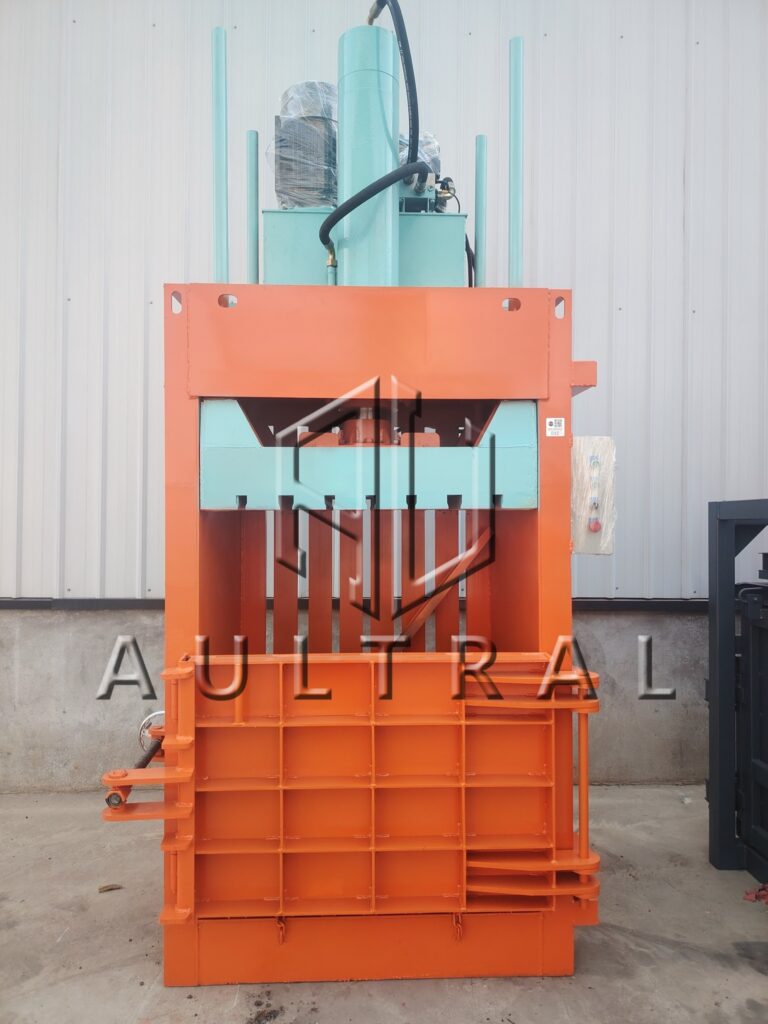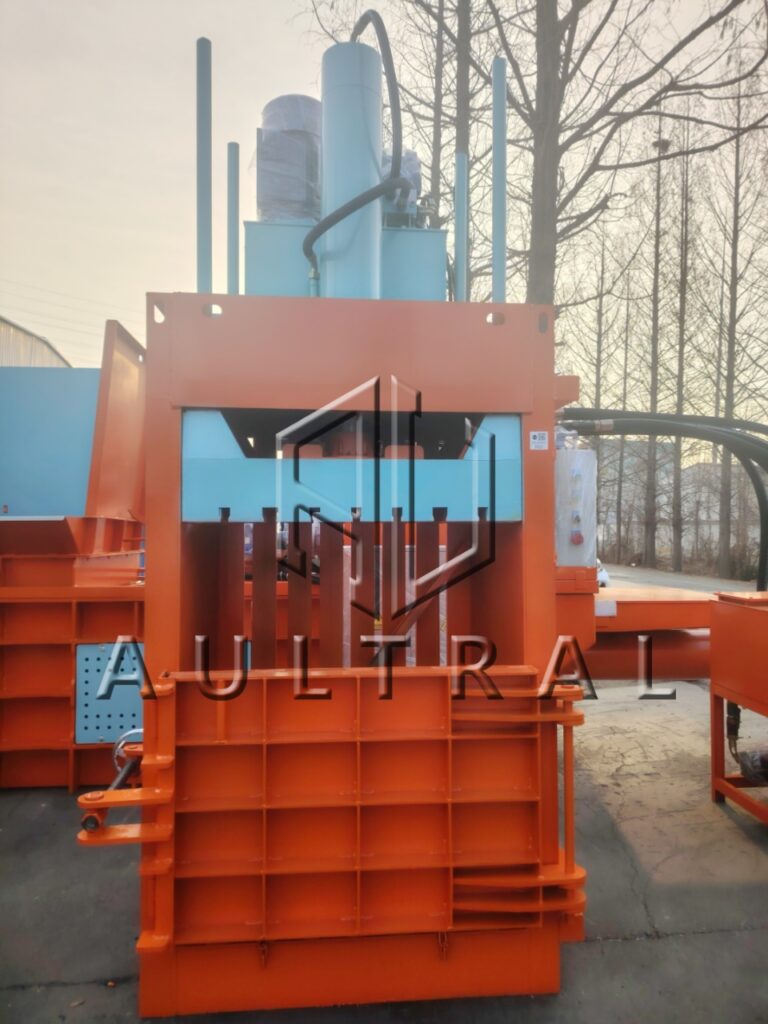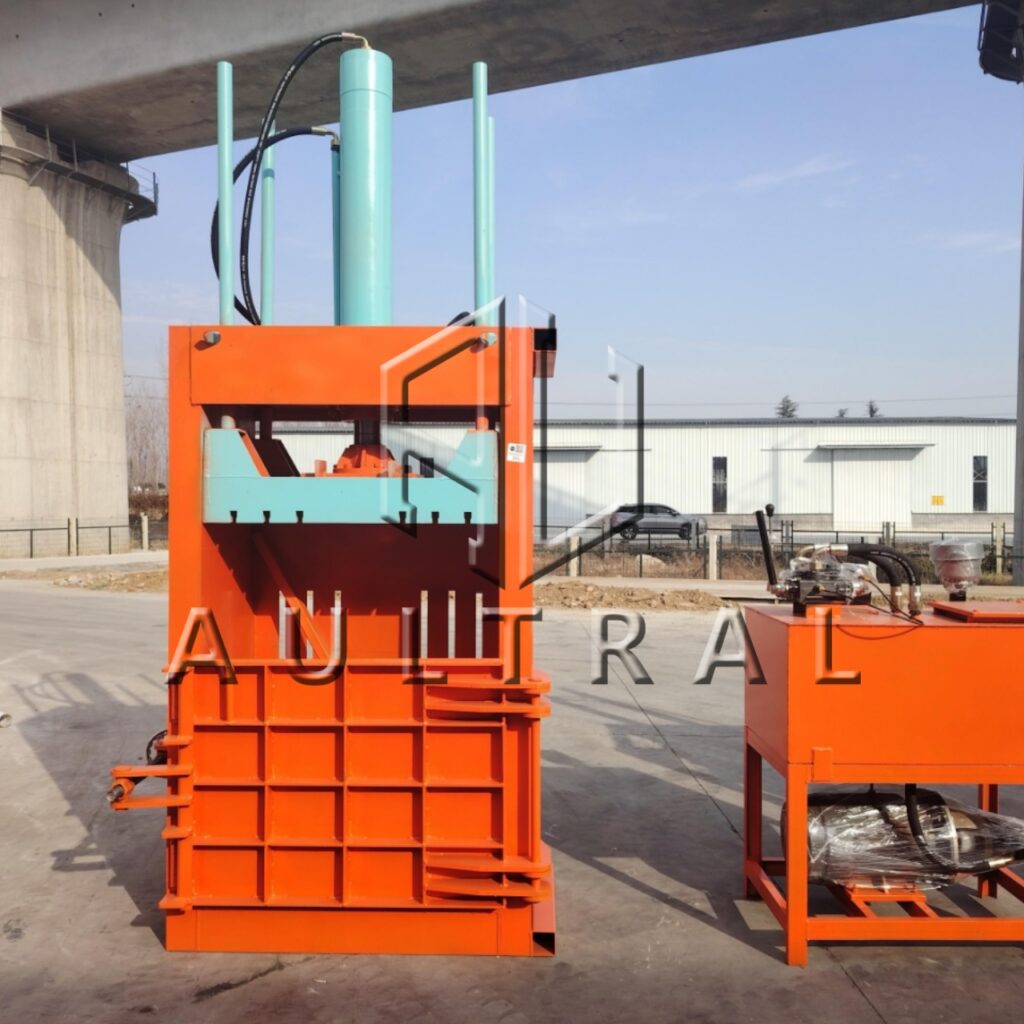What is a Vertical Baler?

A vertical baler is a compact and efficient waste compaction machine designed to compress recyclable materials such as cardboard, paper, plastics, textiles, and aluminum cans into dense, manageable bales for easier storage, transportation, and recycling. Unlike horizontal balers, which require more floor space and are typically used for large-scale industrial operations, vertical balers operate in an up-and-down pressing motion, making them ideal for small to medium-sized businesses, retail stores, warehouses, and recycling centers where space is limited. These machines are highly versatile, capable of handling various materials while reducing waste volume by up to 90%, significantly lowering disposal costs and improving workplace efficiency. Vertical balers come in different sizes and capacities, ranging from manual models with hydraulic hand pumps to fully automated systems with push-button controls, allowing businesses to choose the right baler based on their waste output and operational needs. One of the key advantages of vertical balers is their user-friendly design, requiring minimal training for operation and maintenance, while their sturdy construction ensures long-term durability even under frequent use. Safety features such as emergency stop buttons, safety locks, and two-handed operation mechanisms are often included to prevent accidents during the baling process. Additionally, vertical balers contribute to environmental sustainability by promoting recycling efforts, reducing landfill waste, and helping businesses meet eco-friendly regulations. Common applications include supermarkets compacting cardboard boxes, distribution centers managing packaging waste, and manufacturing facilities recycling scrap materials. When selecting a vertical baler, factors such as bale size, compression force, cycle time, and power source (electric or hydraulic) should be considered to match the machine’s performance with specific waste management requirements. Regular maintenance, such as checking hydraulic fluid levels, inspecting wires and hoses, and cleaning the machine, ensures optimal performance and extends the baler’s lifespan. With their space-saving design, cost-effectiveness, and environmental benefits, vertical balers have become an essential tool for businesses looking to streamline waste management processes while supporting sustainable practices. Whether for reducing clutter, cutting disposal expenses, or complying with recycling mandates, a vertical baler offers a practical and efficient solution for managing recyclable waste in various industries.
Why Use a Vertical Baler?

A vertical baler is an essential waste management solution for businesses looking to improve efficiency, reduce costs, and support environmental sustainability. One of the primary reasons to use a vertical baler is its ability to compress large volumes of recyclable materials—such as cardboard, paper, plastic, and textiles—into compact, tightly packed bales, reducing waste volume by up to 90%. This drastic reduction minimizes the frequency of waste pickups, leading to significant savings on disposal fees and transportation costs. Unlike horizontal balers, which require more floor space and higher operational costs, vertical balers are compact, making them ideal for small to medium-sized businesses, retail stores, warehouses, and recycling centers with limited space. Their vertical loading design allows for easy operation, as workers can simply feed materials into the machine from the top, eliminating the need for complex conveyor systems. Additionally, vertical balers are highly versatile, capable of processing various materials without requiring extensive adjustments, which enhances workflow efficiency. Safety is another key advantage, as modern vertical balers come equipped with features like emergency stop buttons, safety interlocks, and two-handed operation controls to prevent accidents during use. Maintenance is straightforward, typically involving routine checks of hydraulic systems, electrical components, and safety mechanisms, ensuring long-term reliability. From an environmental perspective, using a vertical baler supports recycling efforts by making it easier to store, transport, and sell baled materials to recycling facilities, contributing to a circular economy and reducing landfill waste. Businesses in industries such as retail, manufacturing, logistics, and hospitality benefit from vertical balers by maintaining cleaner workspaces, complying with waste regulations, and even generating additional revenue from selling recyclable bales. The initial investment in a vertical baler quickly pays off through reduced waste management expenses and improved operational efficiency. Whether the goal is cost savings, sustainability, or streamlined waste handling, a vertical baler offers a practical, efficient, and eco-friendly solution for businesses of all sizes. By integrating a vertical baler into daily operations, companies can enhance their waste management processes while supporting broader environmental goals, making it a smart choice for any organization looking to optimize its recycling and disposal strategies.
How to Use a Vertical Baler?

Operating a vertical baler efficiently requires proper knowledge of its functions and safety protocols to ensure optimal performance and workplace safety. Before starting, always inspect the machine for any visible damage, check hydraulic fluid levels, and ensure all safety mechanisms like emergency stop buttons and safety locks are functional. Begin by powering on the baler according to the manufacturer’s instructions, typically using a main switch or control panel. Position the materials to be baled—such as cardboard, paper, or plastic—neatly inside the compression chamber, ensuring they are evenly distributed to avoid uneven bales that could jam the machine. Avoid overloading the chamber beyond its recommended capacity, as this can strain the hydraulic system and reduce efficiency. Once the materials are properly placed, activate the compression cycle using the designated controls, which may involve pressing a button, pulling a lever, or engaging a two-handed operation system for safety. During compression, keep hands and other body parts clear of the baler to prevent injuries, and never attempt to adjust materials while the machine is in operation. After the bale reaches the desired density, secure it with wires or straps if required, then open the chamber door or gate to eject the finished bale. Some vertical balers feature automatic ejection, while others may require manual removal using a pallet jack or forklift. Once the bale is removed, store it in a designated area for recycling or disposal, ensuring it is properly labeled if containing specific materials. After use, perform a quick cleanup of the baler, removing any loose debris or residual materials that could interfere with future operations. Regular maintenance, such as lubricating moving parts, checking hydraulic hoses for leaks, and inspecting electrical components, should be conducted as per the manufacturer’s schedule to prolong the machine’s lifespan. Always follow workplace safety guidelines, including wearing protective gear like gloves and safety glasses, and ensure only trained personnel operate the baler. By adhering to these steps, businesses can maximize the efficiency of their vertical baler, reduce downtime, and maintain a safe working environment. Proper usage not only enhances waste management processes but also contributes to cost savings and environmental sustainability by optimizing recycling efforts. Whether compacting cardboard in a retail store or processing plastic waste in a warehouse, mastering the operation of a vertical baler is key to achieving streamlined and eco-friendly waste management.
